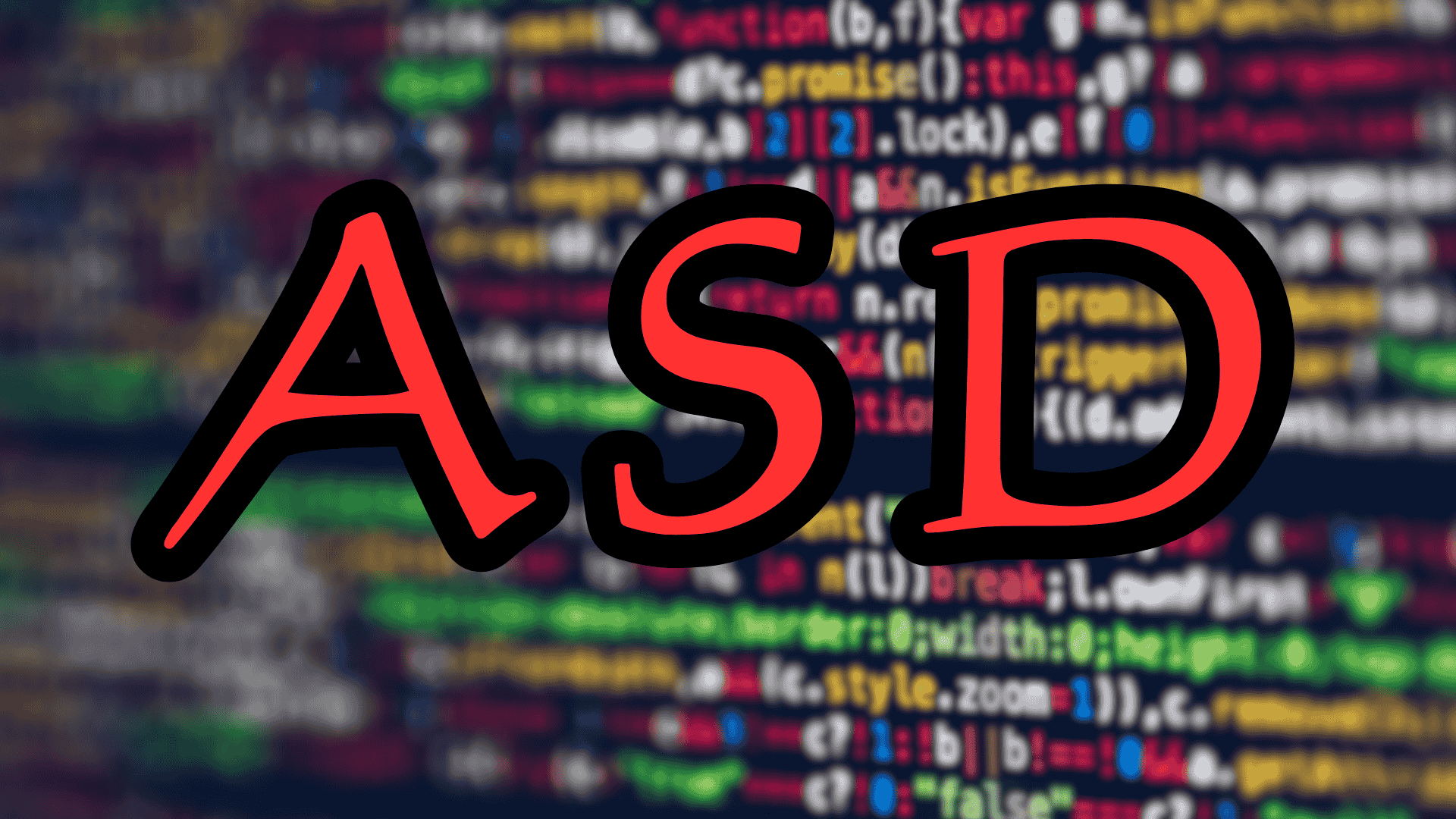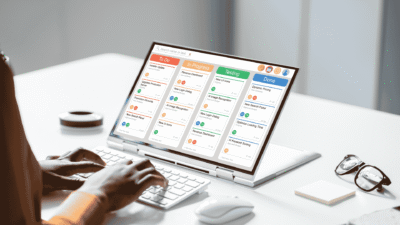Imagine a ship captain setting sail across a vast, unpredictable ocean with a map that was drawn months ago. The map promises a direct route, but it cannot account for the sudden storms, shifting currents, or newly discovered islands that lie ahead. A rigid adherence to this outdated map leads not to the destination, but to peril. This is the reality for nearly 70% of modern business projects that fail to adapt. In a world where market demands change overnight, Adaptive Software Development isn’t just another methodology; it is the modern compass and sail, designed to navigate the turbulence of uncertainty and turn it into a competitive advantage. This guide will move beyond theory and show you precisely how to implement this powerful framework.
1. What is Adaptive Software Development (Beyond the Textbook)?
Many leaders are familiar with traditional project management, where every detail is planned upfront. However, Adaptive Software Development (ASD) operates on a fundamentally different premise. It acknowledges that for complex projects, the final destination may be known, but the exact path is unknowable at the start.
1.1 From Rigid Plans to Fluid Missions
Traditional “Waterfall” methods work like building a house: you lay the foundation, then build the walls, then the roof. Each step must be completed before the next begins. This is effective when requirements are stable and well-understood.
But what if you’re building a new kind of vehicle for an unexplored terrain? You don’t know all the challenges you’ll face. ASD is built for this scenario. It prioritizes a guiding mission over a rigid, step-by-step plan. Instead of asking, “Did we follow the plan?” it asks, “Are we still moving towards our mission, and what have we learned along the way?” This shift is crucial for any leader steering a team through innovation.
1.2 The Core Philosophy: Guiding Principles Over Detailed Instructions
The central idea of ASD is to manage change rather than resist it. It accepts chaos as a given and provides a structure to learn and adapt within it. For you as a leader, this means empowering your team with a clear objective and the autonomy to figure out the best way to get there, adjusting their course based on real-time feedback. It is a transition from being a micromanager of tasks to a facilitator of outcomes.
2. The Engine of ASD: How to Implement the Speculate-Collaborate-Learn Cycle
Adaptive Software Development is powered by a continuous, iterative cycle of three phases. Mastering how to execute this cycle is the key to successfully applying the methodology.
[Visual Suggestion: A circular infographic with three arrows labeled “Speculate,” “Collaborate,” and “Learn.” Each section should have 2-3 bullet points summarizing the key activities.]
2.1 Step 1: Speculate – How to Plan in an Unpredictable World
The word “speculate” can sound like guesswork, but in ASD, it is a disciplined form of high-level planning. It is about envisioning the product’s mission and outlining the major components without getting lost in minute details that are bound to change.
How you can apply this:
- Define the Mission Statement: Instead of a 200-page requirements document, start with a clear, concise mission. For a new inventory management system, the mission might be: “To provide warehouse managers with a real-time, error-free view of all stock levels to reduce shipping delays by 25%.”
- Establish Project Boundaries: Define what the project is and what it is not. Set clear constraints like budget, core technology, and delivery timeline for the initial version. This creates a safe “sandbox” for the team to innovate within.
- Create a High-Level Release Plan: Outline the major features or capabilities in “time boxes” (e.g., iterations of 2-4 weeks). For the inventory system, the first iteration might focus solely on inbound stock tracking, the second on outbound, and the third on reporting. This provides direction without rigid commitment to specific sub-features.
2.2 Step 2: Collaborate – How to Build a Truly Cohesive Team
Collaboration in ASD is more than just working together; it is about merging diverse knowledge and perspectives to solve complex problems that no single individual can. It requires an environment where information flows freely and feedback is constructive.
How you can apply this:
- Structure for Communication: Implement daily stand-up meetings (5-10 minutes) where each team member briefly states what they completed, what they will work on, and any obstacles they face. This makes progress and problems visible to everyone instantly.
- Foster Shared Ownership: Ensure that critical components are reviewed by multiple team members. This practice, often called “peer reviews,” not only catches errors early but also spreads knowledge across the team, eliminating single points of failure. If one person is away, another can step in.
- Encourage Constructive Disagreement: As a leader, you must create a culture where team members feel safe to challenge ideas, regardless of hierarchy. Frame debates around the project’s mission, not personal opinions. Ask questions like, “How does this proposed feature move us closer to reducing shipping delays?”
2.3 Step 3: Learn – How to Turn Failures into Strategic Assets
The “Learn” phase is the most critical. It is where the team systematically reviews the results of their work, gathers feedback, and makes informed decisions about what to do next. Mistakes are not viewed as failures but as valuable data points that refine the path forward.
How you can apply this:
- Conduct Short Review Cycles: At the end of each iteration (e.g., every two weeks), the team must demonstrate the working software to stakeholders. The goal is not a polished presentation but to get honest feedback on tangible results. Did the inbound tracking feature work as expected? Was it easy to use?
- Perform Project Retrospectives: After the demonstration, the team should meet privately to discuss what went well, what didn’t, and what they will do differently in the next cycle. This is a “process-focused” meeting, not a “people-blaming” one.
- Adapt the Plan Fearlessly: Based on feedback and learning, be prepared to change the plan. If stakeholders find a feature confusing, the next cycle might focus on simplifying it rather than building something new. This is agility in action.
3. Real-World Adaptive Software Development: Two Case Studies
Theory is one thing; application is another. Let’s examine how this works in practice with two distinct examples.
3.1 Case Study: A Logistics Firm’s Real-Time Tracking System
- The Challenge: A large logistics company, “Global Haulage,” wanted to build a new system to track its fleet of trucks in real time. The old waterfall plan was already obsolete because new tracking hardware and data standards were emerging monthly.
- The Adaptive Approach:
- Speculate: The mission was “Provide dispatchers with the live location of every truck to optimize routes and reduce fuel consumption.” They planned the project in three-month increments.
- Collaborate: Developers worked directly with a small group of dispatchers, getting daily feedback. They discovered that route-congestion data was more critical than the vehicle’s speed, a detail missed in the original plan.
- Learn: The first prototype, delivered in four weeks, could only track 10 trucks on a basic map. However, dispatchers immediately pointed out flaws in the user interface. The team spent the next two weeks redesigning the interface based on this learning, a pivot that saved months of rework.
- The Result: Within six months, Global Haulage had a highly effective system that dispatchers actually used and loved. It was different from the initial paper plan, but it perfectly achieved the core mission, cutting fuel costs by 12% in the first year.
3.2 Case Study: An Agricultural Tech Startup
- The Challenge: “Harvest AI,” a startup, aimed to develop a tool for farmers to monitor crop health using satellite data. The team knew the goal, but the science of interpreting the data was still evolving. A fixed plan was impossible.
- The Adaptive Approach:
- Speculate: The mission was “Empower farmers to identify crop distress 10 days earlier than by visual inspection.” They decided to first build a simple dashboard showing just one data metric: water stress.
- Collaborate: The software team held weekly calls with two partner farms. The farmers provided ground-truth data, helping the team correlate the satellite imagery with real-world conditions.
- Learn: An early assumption was that farmers wanted complex charts. Through collaboration, the team learned that a simple, color-coded map (green for healthy, yellow for concern, red for distress) was far more useful. They abandoned the complex charts and focused on perfecting the map, a crucial learning that defined the product.
- The Result: The product launched successfully because it was built on a foundation of continuous learning and real user feedback. It directly addressed the farmers’ needs in a simple, actionable way.
[Visual Suggestion: A simple flowchart comparing the project path of Global Haulage in a Waterfall model (straight, rigid line leading to a mismatched outcome) versus an ASD model (a wavy but forward-moving line that hits the target outcome accurately).]
4. Your Role as a Leader in an Adaptive Environment
Adopting ASD requires more than just changing your team’s processes; it requires a profound shift in your leadership style.
4.1 From Commander to Facilitator
Your primary job is no longer to create the perfect plan and enforce it. Instead, you are the facilitator who clears obstacles, provides resources, and protects the team from external distractions so they can focus on the Speculate-Collaborate-Learn cycle. You guide the mission, but you trust your team with the execution.
4.2 Fostering Psychological Safety
For the “Collaborate” and “Learn” phases to work, your team members must feel safe to take risks, admit mistakes, and challenge the status quo. If they fear blame, they will hide problems until it’s too late. You can foster this safety by:
- Celebrating learning from mistakes, not just successes.
- Asking for input and genuinely listening to it.
- Responding to bad news with “Thank you for letting me know. How can we solve this?” instead of “Whose fault is this?”
4.3 Measuring What Matters: Outcomes Over Outputs
A traditional manager might measure a team’s productivity by the number of features built or lines of code written (outputs). An adaptive leader measures success by the achievement of the mission (outcomes). Did we reduce shipping delays? Did we help farmers identify crop distress earlier? This focus ensures that all effort is directed toward creating real value, not just being busy.
Conclusion: Navigating the Future with Confidence
The business landscape is no longer a placid lake with a clear destination; it is a dynamic ocean of change. Sticking to a rigid map is a recipe for failure. Adaptive Software Development offers you and your team a modern navigational system—a framework built on a clear mission, intense collaboration, and relentless learning. By embracing the Speculate-Collaborate-Learn cycle, you transform your role from a planner of tasks to a leader of innovation. You empower your team not just to survive uncertainty, but to harness its energy and deliver extraordinary results that truly matter. The question is no longer whether a storm will come, but whether you have built a ship capable of sailing through it.
Frequently Asked Questions (FAQ)
- 1. How is Adaptive Software Development different from other Agile methods like Scrum?
ASD is a higher-level framework focused on the mindset of adapting to change, especially in highly complex and uncertain projects. Scrum is a more prescriptive framework with specific roles (e.g., Scrum Master), events (e.g., Sprints), and artifacts. You can use Scrum as a practical way to implement the principles of ASD. ASD provides the “why” (adapt), while Scrum provides a specific “how” (sprints, roles). - 2. Can Adaptive Software Development be used for non-software projects?
Absolutely. The core principles of Speculate-Collaborate-Learn are universal. It can be applied to product design, marketing campaigns, research and development, or any complex initiative where requirements are likely to change. The focus shifts from “software” to “solution” development. - 3. What is the biggest challenge for leaders adopting ASD?
The biggest challenge is often personal: shifting from a command-and-control mindset to one of trust and facilitation. It requires relinquishing the comfort of a detailed upfront plan and embracing the process of discovery. Leaders must become comfortable with ambiguity and empower their teams to make decisions. - 4. How do you manage budgets and timelines in an adaptive environment?
Budgets and timelines are managed through time-boxing and prioritizing value. Instead of approving a budget for a fixed set of features, you fund the team for a fixed period (e.g., a quarter). At the end of that period, they will have delivered the most valuable, working version of the solution possible. This approach ensures that investment is always directed toward the highest-priority outcomes, providing budget control without stifling adaptation.
references
Warning: The provided links lead only to the specified content. Other areas of those sites may contain material that conflicts with some beliefs or ethics. Please view only the intended page. Note: The source links are available in English only.
- Wikipedia Published: 2025 (accessed recently) Author: — Adaptive Software Development article.
Overview of ASD concept including speculate-collaborate-learn cycle and comparison with waterfall. :contentReference[oaicite:0]{index=0} - Kellton Tech Blog Date: March 13, 2025 Author: Saumyadip Pramanik Adaptive Software Development: A Detailed Guide.
Breaks down ASD key principles, life-cycle phases and how to implement. :contentReference[oaicite:1]{index=1} - GeeksforGeeks Date: July 12, 2025 Author: — What is Adaptive Software Development (ASD)?.
Technical description of ASD, its origin (Highsmith & Bayer) and its iterative nature versus waterfall. :contentReference[oaicite:2]{index=2} - Abstracta.us Blog Date: June 9, 2025 Author: — Adaptive Software Development (ASD) for Complex Projects.
How ASD works in complex evolving projects, emphasizes collaboration, feedback, learning. :contentReference[oaicite:3]{index=3} - Avertim Date: — Author: — Case study on how to deploy a real-time tracking tool in logistics.
Real-life example of implementing tracking systems in logistics, matching your “Global Haulage”-type case. :contentReference[oaicite:4]{index=4}




